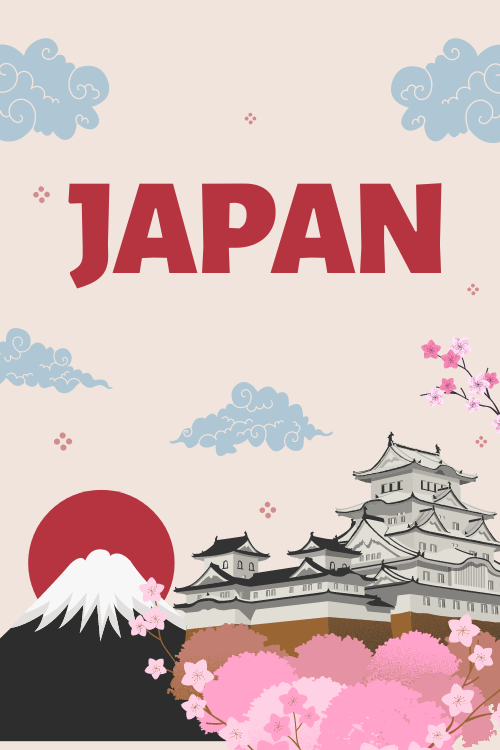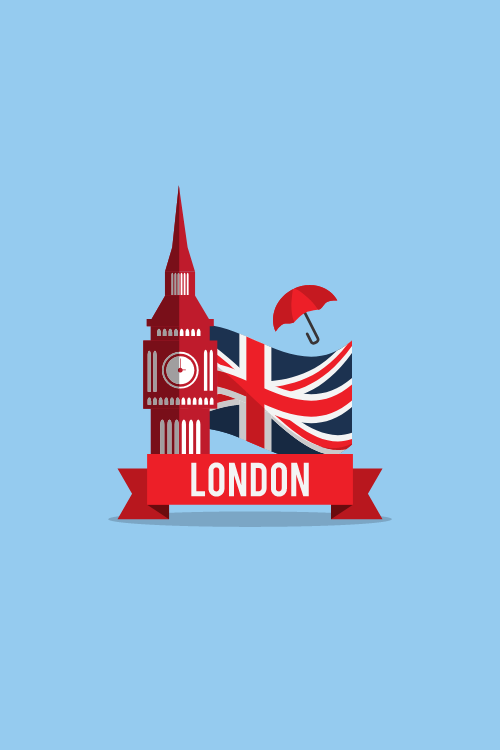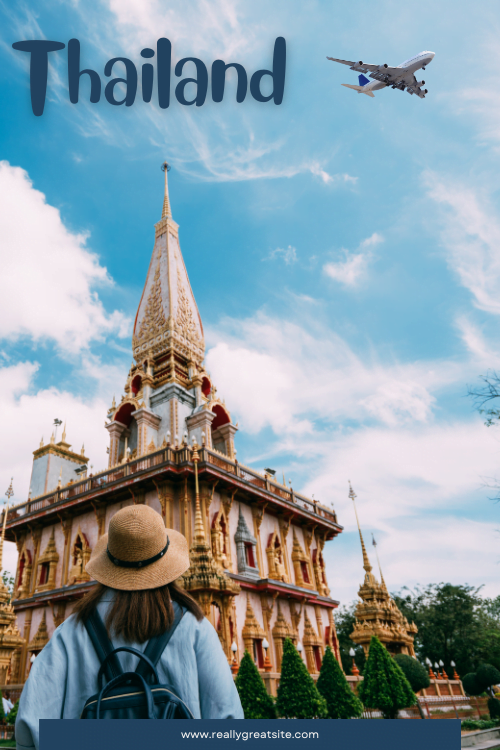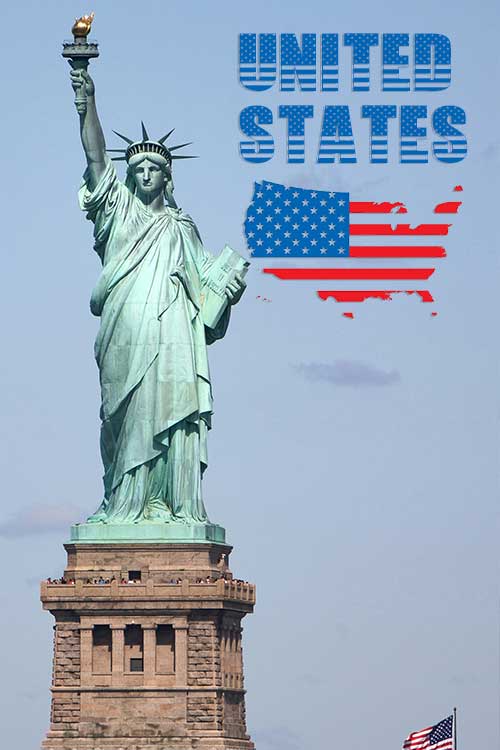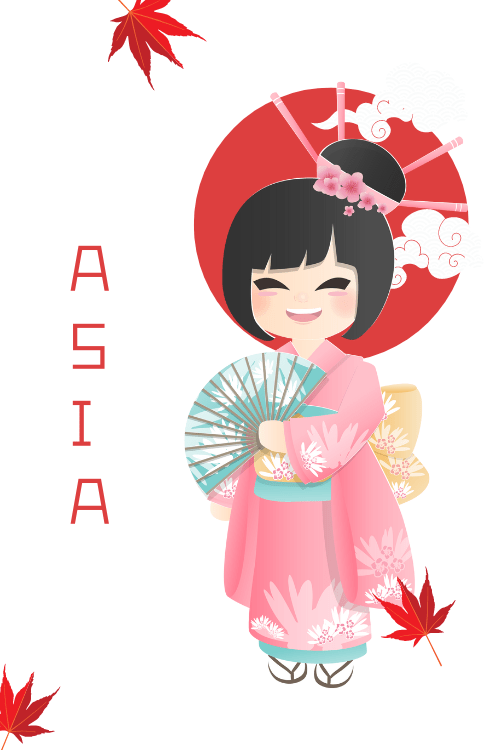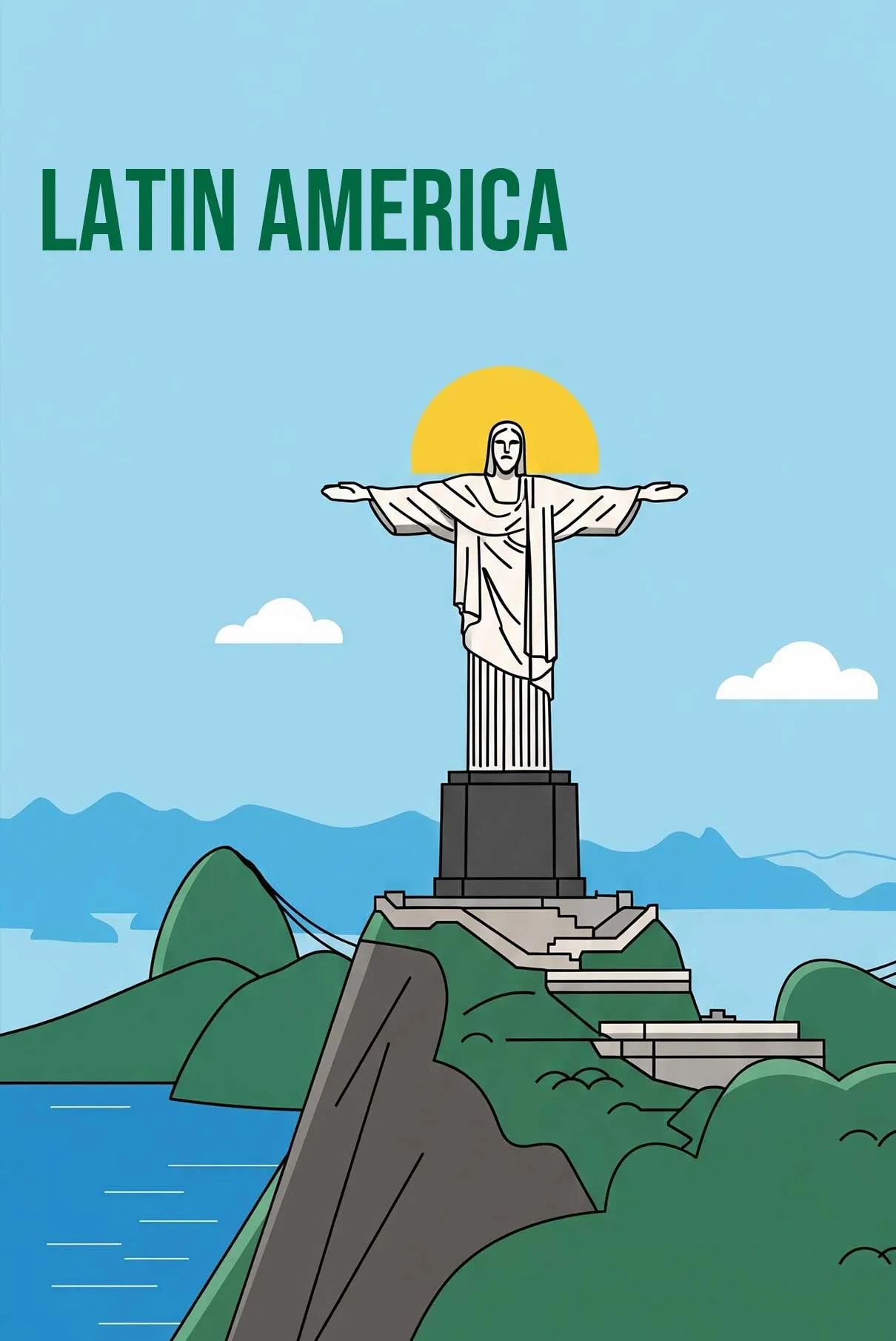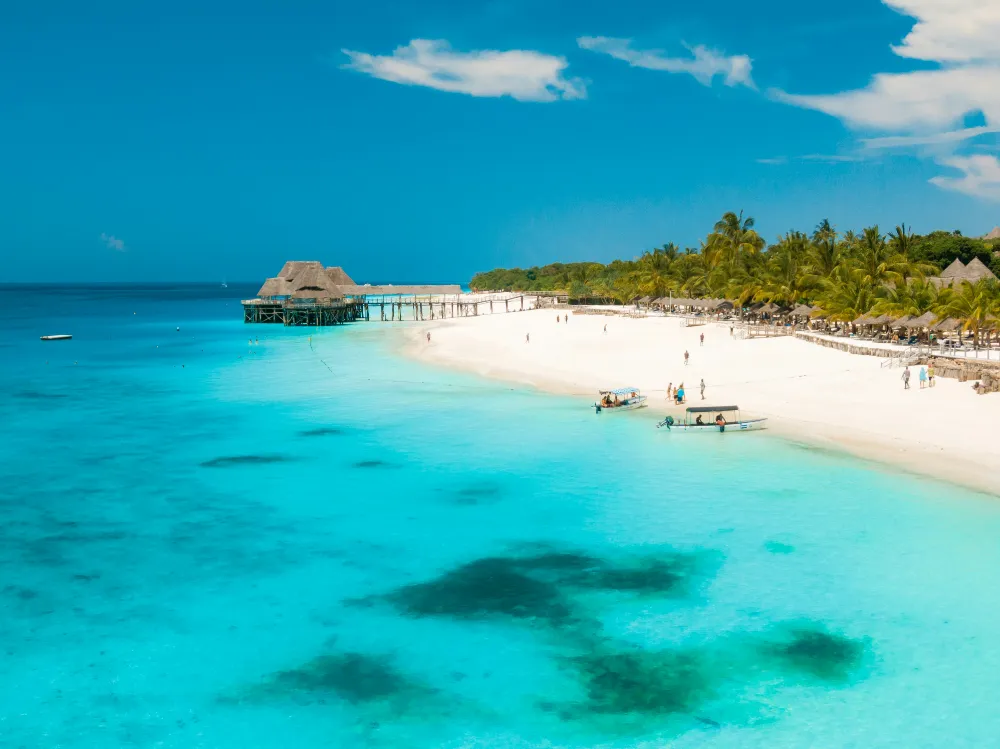Best Time To Visit
Best Time to Visit Zanzibar: Updated For 2025
Zanzibar is a group of islands sparkling off the coast of Tanzania.
It calls to visitors with a charm that’s both old and lively. Imagine sunny white sand beaches, soft tropical winds, blue-green waters, and palm trees – a perfect setting for a memorable trip.
But Zanzibar offers more than just beautiful nature; it’s a mix of many cultures. Over hundreds of years, people from Arabia, Persia, India, and Europe have come together here.
You can see their mark on the buildings, food, and customs. Zanzibar was once called the “Spice Islands,” and you can often smell spices like cloves, nutmeg, and cinnamon in the air.
If you visit Stone Town, a special historic site, you’ll find winding narrow streets and feel the history of its busy trading days.
You can look forward to a wonderful tropical vacation with colorful coral reefs, amazing places to dive, and green mangrove forests full of animals.
But to really enjoy all the magical and romantic things this East African gem offers, picking the right time to go is very important.
There isn’t just one “best” time to visit Zanzibar. It really “depends on what you want to do. Are you looking for sunny days at the beach, cultural festivals, or maybe an African safari?”.
This guide will explain Zanzibar’s weather and different seasons. It will help you find the ideal time for your dream vacation, whether you want to relax in the sun, explore underwater, experience the local culture, or travel on a budget.
A Closer Look At Zanzibar’s Weather
Zanzibar has a tropical kind of weather pattern. This pattern is mostly set by two main rainy times and two dry times of the year. Each of these seasons has different weather that changes what it’s like to be on the island. Knowing about this natural cycle is the first thing to do when planning your trip. This will help you match your visit with what you want to do and how comfortable you want to be.
The Long Rains, which locals sometimes call Masika, usually happen from mid-March to May. This is when Zanzibar gets its heaviest rain all year. April and May are especially rainy. The rain can really affect daily activities. The islands get very green and beautiful, but the beaches might not be at their best.
After the long rains, the Long Dry Season begins, usually from June to October. This time is often thought of as the most popular time to visit. The weather is “cooler and not as sticky,” with lots of sunshine and very little rain. This makes it perfect for beach vacations and exploring outdoors. The average temperature is a comfortable 26°C (79°F).
The Short Rains, also called Vuli, come in November and last until early December. These rains are usually lighter and don’t last as long as the long rains. Often, you’ll see “quick showers in the afternoon” but “mornings are mostly sunny”. There’s a chance of rain, but it usually doesn’t ruin a vacation. The islands stay warm, and the evenings get a bit warmer as this season goes on.
Lastly, the Short Dry Season is from mid-December to February or early March. This time has “hot and fairly dry” weather. You can expect “warm, pleasant temperatures and great weather for water fun”. January is often the hottest month. Temperatures during the day can get up to the low to mid-30s Celsius (around 34°C or 93°F). But if you’re near the coast, you’ll enjoy nice sea breezes.
This repeating pattern of wet and dry times, plus changes in temperature and how sticky the air feels, affects a few things. It changes how comfortable you’ll feel on the islands. It also changes whether you can do certain activities, how many other tourists will be there, and even how much hotels and tours might cost.
Zanzibar’s Seasons at a Glance
| Season | Months | Typical Weather | Avg. Temp Range (Approx.) | Pros | Cons |
| Long Rains (Masika) | Mid-March – May | Heavy, frequent downpours, especially April & May; high humidity; very wet | Mild to Warm | Lowest rates, fewest tourists, lush green landscapes, tranquil and serene | Sub-par beach conditions, persistent rain, some lodges may close, limited activities |
| Long Dry Season | June – October | Sunny, minimal rainfall, cooler, less humid, clear skies, gentle breezes | 26°C (79°F) | Ideal beach weather, excellent for water sports & outdoor activities, can combine with safari | Peak tourist season, higher prices, can be crowded |
| Short Rains (Vuli) | November – Early December | Lighter, often afternoon showers; mostly sunny mornings; humid | Warm, evenings warmer | Fewer crowds than peak, mostly good weather in mornings, good rates possible | Some rain, can be humid, unpredictable showers |
| Short Dry Season | Mid-December – Feb/Early Mar | Hot and relatively dry; balmy temperatures; clear skies | Up to 34°C (93°F) | Excellent beach & swimming weather, fantastic diving, festive atmosphere (Dec/Jan) | Hot and humid (especially Jan/Feb), busy period (especially holidays), peak prices |
Overall Best Times to Visit Zanzibar
Even though the “perfect” time depends on what you like, most people agree on two main periods. These are thought to be the overall best times to visit Zanzibar. This is mostly because the weather is good for doing many different things.
The first, and often most recommended time, is the long dry season, from June to October. This is when “the best time to visit Zanzibar is during the dry season.” You’ll find “sunny white sand beaches, soft tropical winds, blue-green waters, and palm trees”. Look forward to “clear sunny days and warm weather around 26°C (79°F).” This is perfect for anyone wanting a classic tropical beach vacation. These months are especially good for “snorkeling, diving, and lots of fun on the beach”. Also, this time matches the main safari season in Tanzania on the mainland. So, many travelers choose this time to mix a wildlife adventure with relaxing on the island.
The second great time is the short dry season, from mid-December to February. People often say this is “another excellent time to visit Zanzibar”. During these months, the islands have “warm, pleasant temperatures and great weather for water fun”. The weather is usually “hot and dry.” This means “excellent weather for the beach and swimming”. This season also has a festive feel, especially around Christmas and New Year. It draws travelers who want to get away from cold weather.
These two seasons are the busiest times for tourists in Zanzibar. This is mostly because they have the most dependable sunshine and the driest weather. This kind of weather gives you the best chance to enjoy all the famous outdoor things to do on the islands.
This “Invisible” SIM Card is Saving Ordinary Travellers Hundreds on International Trips
You see those travelers glide through airport arrivals – calm, internet connected, already booking their ride-share while others are frantically searching for Wi-Fi or queuing at chaotic phone kiosks…
What’s their secret?
When you travel overseas you’re either paying insanely high data-roaming fees from your home carrier or frantically hunting down some local SIM card kiosk the second you land, wasting precious vacation time just trying to get your phone working.
One leaves you with a bill that leaves a sour taste in your mouth after a great trip. The other eats into your actual holiday, causing stress and hassle when you should be exploring.
But what if I told you that ordinary travelers just like you have figured out a way to completely bypass this frustrating experience?
They’re using something most travelers don’t even know exists… a kind of “invisible” SIM card technology that you likely already have on your phone right now.
And it’s allowing them to tap into super-cheap, high-speed data anywhere in the world… without swapping cards, without visiting a store, and without getting ripped off.
It’s called an eSIM.
And eSIM4.com makes getting one simple.
Here’s how it works:
- Step 1: Go to eSIM4.com.
- Step 2: You pick your destination, choose a data plan.
- Step 3: We send you a simple QR code. You scan it with your phone’s camera.
Your new travel SIM is installed in under 3 minutes!
The moment your plane’s wheels hit the tarmac overseas? Your phone instantly connects to a fast, local network.
No queues. No fumbling with tiny plastic chips. No nasty bill shock.
Just seamless, affordable data letting you use Google Maps, WhatsApp, Uber, Instagram… whatever you need… right away.
This is how travel is supposed to work. And it’s saving people like you hundreds of dollars on a single trip.
Stop letting the big phone companies treat your travel budget like their personal ATM. Stop wasting your valuable vacation time being disconnected or stressed.
Join the smart travelers who’ve already made the switch.
CLICK HERE TO GET STARTEDZanzibar Month-by-Month: A Detailed Look at the Year
To really find the best time for your trip, looking at Zanzibar’s conditions month by month gives you very helpful details. Each month has its own mix of weather, things to do, number of tourists, and possible events. This helps match different traveler tastes. The table below gives a quick look, and then there’s a more detailed description for each month.
Zanzibar Monthly Weather & Activity Snapshot
| Month | Avg. Temp (°C/°F) (Approx.) | Sunshine Hours (Est. Daily) | Approx. Rainy Days (Est.) | Key Activities/Events | Crowd Level |
| Jan | 30-34°C / 86-93°F | 8-9 | 5-7 | Finest diving, dolphin watching, beaches, New Year festivities | High |
| Feb | 30-34°C / 86-93°F | 8-9 | 4-6 | Fantastic diving (south coast), Sauti za Busara festival, beaches, dolphins | High |
| Mar | 28-32°C / 82-90°F | 7-8 (early), 5-6 (late) | 7-9 (early), 12-15 (late) | Good diving (early), rains begin mid-month, fewer tourists in Stone Town | Medium to Low (late) |
| Apr | 26-30°C / 79-86°F | 4-5 | 18-22 | Long rains peak, very wet, low rates, few tourists, lush scenery | Very Low |
| May | 25-29°C / 77-84°F | 5-6 | 15-18 | End of long rains, still wet, low rates, tranquil, some lodge closures | Very Low |
| Jun | 26-28°C / 79-82°F | 8-9 | 4-6 | Start of dry season, excellent beach weather, diving, snorkeling | Medium to High |
| Jul | 26-28°C / 79-82°F | 8-9 | 3-5 | ZIFF & Mwaka Kogwa festivals, great beaches, diving, spice tours | High |
| Aug | 26-28°C / 79-82°F | 9-10 | 3-5 | Peak dry season, cooler, great beaches, diving, safari combo | High |
| Sep | 27-29°C / 81-84°F | 9-10 | 4-6 | Turtle hatching (Mafia), excellent weather, diving, fewer crowds than Aug | Medium to High |
| Oct | 28-30°C / 82-86°F | 8-9 | 5-7 | Calm seas, clear skies, good snorkeling (Mnemba), whale sharks (Mafia) | Medium |
| Nov | 28-31°C / 82-88°F | 6-7 | 10-12 | Short rains (afternoon showers), sunny mornings, pool/beach relaxation | Medium |
| Dec | 29-32°C / 84-90°F | 7-8 | 8-10 (early), 5-7 (late) | Whale sharks (Mafia), rains clear mid-month, festive season, diving | Medium to High (late) |
(Note: Sunshine hours and rainy days are estimations based on seasonal descriptions.)
January: Kicking off the Year with Sunshine & Superb Diving
January is in Zanzibar’s short dry season. It’s often called one of the best times to visit, especially if you love water activities.
Weather Snapshot: Expect hot and mostly dry weather. Daytime high temperatures are usually in the low to mid-30s Celsius (around 32°C to 34°C). January can be one of the hottest months, but if you’re near the coast, you’ll usually get nice sea breezes. This makes the heat easier to handle.
Key Activities & Highlights: This month has some of the “best diving conditions of the year”. The clear, warm waters are perfect for exploring Zanzibar’s colorful coral reefs and sea life. It’s also a great time to swim with dolphins, especially near Mnemba Island and Kizimkazi. Of course, relaxing on the beach and swimming are top activities in the plentiful sunshine.
Crowd Levels & Atmosphere: January is a busy month. The festive feeling from Christmas and New Year often continues. Many travelers come to escape colder winters in the northern part of the world. This makes for a lively, though sometimes crowded, atmosphere.
Pros: Amazing diving and snorkeling, always sunny weather, lively and festive mood.
Cons: Can be very hot and sticky, hotels and popular tours often cost more, and beaches and sights can be crowded.
Expert Tip: Since January is so popular, it’s a good idea to book your hotel, flights, and any special tours (like diving trips) far ahead of time. The clear waters around the south coast, often mentioned for February and March, also have great diving in January.
February: Peak Diving and Cultural Vibrancy
February keeps up the hot and dry weather. This makes it another wonderful month for a Zanzibar vacation. It’s especially good for divers and people interested in local culture.
Weather Snapshot: The weather is like January – hot, sunny, and quite dry. Average temperatures can reach 34°C (93°F). It’s one of the driest months before the long rains start.
Key Activities & Highlights: February, and March too, offer “fantastic diving opportunities.” The water is especially clear in and around coral reefs and lagoons, particularly on the south coast. It’s also a top month for seeing dolphins. A big cultural event is the Sauti za Busara music festival. It’s usually in Stone Town in early February, showing off a wide range of African music and attracting crowds from all over the world.
Crowd Levels & Atmosphere: The island stays busy, partly because of the great weather and also due to events like Sauti za Busara.
Pros: Amazing diving conditions, lively cultural scene with the music festival, perfect beach weather.
Cons: Still hot and sticky, can be crowded, top season prices often still in place.
Expert Tip: If you plan to go to Sauti za Busara, book tickets and your hotel in Stone Town very early. For divers, checking out the less crowded dive spots on the south coast can be especially good this month.
March: A Month of Transition
March is a month of change in Zanzibar. The beginning of the month can still have nice weather. But the second half usually sees the “long rains” start.
Weather Snapshot: Early March might still be good for beach holidays, with lots of sunshine, especially in the first two weeks. But as the month goes on, showers get more common and heavier. This signals that the main rainy season (Masika) is about to start by mid-March.
Key Activities & Highlights: Diving can still be very good in early March, especially on the south coast. Stone Town usually has fewer tourists from March on. This means a quieter time for those exploring its old streets.
Crowd Levels & Atmosphere: The number of tourists starts to go down as the rains get closer, particularly in the last half of the month.
Pros: Possibly good weather and fewer crowds in early March, prices might start to get lower.
Cons: The weather gets more unpredictable and wet as the month continues.
Expert Tip: If good weather is important to you for a March trip, try to go in the first two weeks. It can be a good time to find deals on hotels before the heavy rains really begin.
April & May: The Heart of the Long Rains – Budget Opportunities Amidst Showers
April and May are known for Zanzibar’s “long rains.” These months get the heaviest and most constant rainfall of the year.
Weather Snapshot: These months have a lot of rain. This leads to “mild and very wet weather on the beaches”. Beach conditions are generally not the best.
Key Activities & Highlights: Outdoor beach fun is very limited. However, the island becomes incredibly “green and lush,” which is beautiful in its own way. For some people, this time is a chance to see Zanzibar when it’s quieter, “mostly without tourists”.
Crowd Levels & Atmosphere: This is the low season, with the fewest tourists. Many hotels and resorts might close during this time because of the weather and lack of visitors.
Pros: This is the “cheapest time to visit Zanzibar,” and hotels often have their lowest prices. The islands are quiet and peaceful.
Cons: Constant rainy weather makes beach holidays and many outdoor activities difficult. Some tourist places might be closed.
Expert Tip: April and May aren’t ideal for a typical sun and sand holiday. But they can be good for travelers on a budget who don’t mind the rain. Maybe they’re more interested in the culture of Stone Town (which will be very quiet) or just want a peaceful break. It’s very important to check if the hotel you choose will be open. The word “rewarding” can be true if you know what to expect, focusing on the quiet and green scenery.
June, July & August: Peak Season Paradise – Sun, Sand, and Festivities
These months are the main part of the long dry season. They are widely seen as the absolute best time to visit Zanzibar for classic beach holidays.
Weather Snapshot: Expect “clear sunny days and warm 26°C (79°F) weather”. The conditions are perfect for long days relaxing on sunny beaches. August is known as one of the last months with cooler weather before temperatures start to climb again.
Key Activities & Highlights: This is the best time for all beach activities, snorkeling, diving, and sunset boat trips. July is especially lively with culture. It has the Zanzibar International Film Festival (ZIFF) in Stone Town and the Mwaka Kogwa (Shirazi New Year) festival, particularly in Makunduchi. Spice tours are also great, and cloves are often harvested between July and September. This time also perfectly matches the great wildebeest migration in Tanzania’s Serengeti. This makes it perfect for a combined safari and beach holiday.
Crowd Levels & Atmosphere: This is the top tourist season, so expect more people and a lively feeling.
Pros: Perfect weather, many festivals and cultural events (especially July), great for combining with a safari on the mainland.
Cons: Higher prices for flights and hotels, popular places can be crowded.
Expert Tip: Book far in advance if you plan to travel during these popular months. If you’re also going on a safari, it’s a good idea to plan both parts of your trip at the same time.
September: A “Wonderful Month” with Unique Wildlife Opportunities
September keeps the great dry season weather going. It also offers some special attractions with possibly fewer crowds than July and August.
Weather Snapshot: The weather stays “not too hot and not too humid”. It’s generally thought of as a “wonderful month all over Zanzibar”.
Key Activities & Highlights: The Mafia Archipelago, south of Unguja (the main island), has something special in September. You can see turtle hatching and find amazing diving in deeper channels. While diving in general is good, scuba divers should plan carefully as some spots further from shore can get a bit rough. It’s also a good time for swimming with dolphins.
Crowd Levels & Atmosphere: While still popular, September often has a few less tourists than the very peak of July and August.
Pros: Beautiful weather, special wildlife viewing (turtle hatching), excellent diving, maybe fewer crowds than mid-summer.
Cons: Some specific dive sites far from shore might have rougher water.
Expert Tip: September can be a “sweet spot” for travelers. This is for those who want fantastic weather and unique things to see like turtle hatching, without the biggest crowds of the months before.
October: Calm Seas and Departing Crowds
October is the end of the long dry season. It offers a nice change before the short rains come.
Weather Snapshot: October has “cooler winds, calm seas and clear skies”. Ocean temperatures start to go up, and evenings slowly get warmer.
Key Activities & Highlights: This is a great time to travel to Zanzibar because “the crowds leave, but the weather is perfect for an unforgettable beach holiday”. Warm seas, light winds, and very clear water make October one of the best times for snorkeling, especially near Mnemba Island. The Mafia Archipelago starts to be a top spot for those hoping to dive with whale sharks, as their season begins.
Crowd Levels & Atmosphere: Fewer tourists than the June-September peak, which means a more relaxed feeling.
Pros: Excellent weather, calm seas great for water activities, fewer crowds, start of whale shark season in Mafia.
Cons: Getting closer to the short rains, so there’s a very small chance of an early shower near the end of the month.
Expert Tip: October has a wonderful mix of great weather, good value, and fewer people. This makes it an excellent choice for many travelers.
November: The “Short Rains” – Mornings for Sun, Afternoons for Showers
November brings the “short rains” (Vuli). This is a time of more humidity and usually short showers, often in the afternoon.
Weather Snapshot: Temperatures go up, and clouds usually gather in the mornings. Mornings can be “quite sunny and humid”. The clouds then break into “impressive, but usually short showers in the afternoons”. This pattern often means mornings are free for activities.
Key Activities & Highlights: Mornings often have mostly sunny weather, good for enjoying the beach or relaxing by the pool. The afternoon showers are a good chance to go to a beach bar, get a massage, or explore indoor sights.
Crowd Levels & Atmosphere: The number of tourists is medium – lower than peak seasons but higher than the long rainy season.
Pros: Mornings are often sunny, fewer crowds than peak season, the island gets greener.
Cons: Afternoon rain showers are common, the air is more humid.
Expert Tip: If you’re flexible with your time and don’t mind some rain, November can be a good value. Pack a light rain jacket and plan your outdoor activities for the mornings.
December: Festive Season and Whale Shark Encounters
In December, the short rains usually stop, especially by the middle of the month. This is just in time for the festive holiday crowds.
Weather Snapshot: The first half of the month might still have some showers. But the weather generally gets better, with more sunshine around Christmas and New Year’s Eve.
Key Activities & Highlights: The Mafia Archipelago is a top place to go in December. It’s a perfect time for diving with amazing whale sharks. As the weather gets better, beach conditions become excellent again. The islands get ready for the festive season. Diving conditions in general are good.
Crowd Levels & Atmosphere: The second half of December gets very busy with holiday travelers. This brings a festive and energetic feeling.
Pros: Improving weather, best time for whale shark viewing in Mafia, festive mood towards the end of the month.
Cons: Can be crowded and more expensive during the holiday time, early December might still have some rain.
Expert Tip: If you want to see whale sharks in Mafia, December is excellent. For general beach holidays, try for the second half of the month for better weather. But book very early because many people want to come then.
Best Time to Visit Zanzibar: For Your Kind of Trip
The “best” time to visit Zanzibar becomes clear when you think about what’s important for your trip. Zanzibar has great times to visit for everyone. This is true if you love the sun, are a keen diver, enjoy culture, are watching your budget, or want to mix island relaxation with an exciting safari.
For Beach Lovers & Sun Seekers:
If you dream of “sunny white sand beaches” and long days with clear skies, aim for Zanzibar’s two main dry seasons.
Best Months: The long dry season from June to October is the top choice. It offers sunny days most of the time, warm but not too hot temperatures (around 26°C/79°F), and gentle winds. The short dry season, from mid-December to February, also has “excellent beach and swimming weather.” However, it’s usually hotter and more humid.
Why: These times give you the most sunshine and the least rain. This means perfect conditions for swimming, sunbathing, and enjoying the islands’ famous beautiful coasts.
For Divers & Snorkelers:
Zanzibar’s underwater world is a big attraction. Picking the right time can make the experience much better.
Best Months: February and March are often pointed out for “fantastic diving opportunities.” This is especially true along the south coast where lagoons and coral reefs have clear waters. The long dry season, June to October, also has calm seas and good clearness for both diving and snorkeling. December and January are known for having some of the “best diving conditions of the year”.
Specifics: For a truly amazing experience, the **Mafia Archipelago (south of Zanzibar’s main island, Unguja) is the place for whale shark sightings. This is usually from October to March, with December and January being the top months. Mnemba Island, a private sea life protection area off the northeast coast of Unguja, is famous for its amazing snorkeling and diving all year. However, the water is calmest and clearest during the dry seasons. Water clearness can be excellent in March and September.
Considerations: You can dive all year round. But the rainy seasons (especially April-May) can make the water less clear because of runoff from the land.
For Wildlife Enthusiasts:
Besides the reefs, Zanzibar offers special chances to see marine wildlife.
Dolphins (Swimming/Viewing): The best months to see and swim with dolphins are June to September, and also January and February. Good spots include Kizimkazi on the southwestern coast, which has long been known for its dolphin tours. The waters around Mnemba Island also attract dolphins, along with green turtles and many kinds of coral fish. It’s very important to choose tour companies that are responsible and care about the animals’ well-being.
Whale Sharks (Mafia Archipelago): As said before, the main season for these large, gentle fish is October to March. This season is at its best in December/January.
Sea Turtle Hatching (Mafia Archipelago): September gives a special chance to see baby sea turtles hatching on the beaches of the Mafia Archipelago. Green turtles are also often seen around Mnemba Island.
Jozani Forest (Red Colobus Monkeys): Jozani Chwaka Bay National Park is home to the Zanzibar Red Colobus monkey, which is only found there. You can visit it all year. However, walking through the forest is usually more comfortable during the drier months (June-October, December-February). At these times, the paths are less muddy.
For Cultural Experiences & Festivals:
Zanzibar’s interesting history and lively culture can be seen all year. But some times offer special events.
Zanzibar International Film Festival (ZIFF): This happens every year in July in Stone Town. ZIFF is one of East Africa’s biggest film and arts festivals. It shows movies, music, and performances from all over Africa and other places.
Mwaka Kogwa (Shirazi New Year): This traditional festival is in July, especially in Makunduchi in the south of Unguja. It includes pretend fights and different ceremonies to welcome the new year. It’s a fascinating cultural event to see.
Sauti za Busara (Music Festival): This well-known African music festival makes Stone Town lively in early February. It has many different artists from all over Africa.
Spice Tours & Clove Harvests: You can take spice tours any time of year. But the experience can be even better during the main clove harvesting season, which is usually from July to September. Exploring the spice farms is nicer in dry weather.
Stone Town Exploration: Walking through the old streets of Stone Town is something you can do all year. However, if you want a quieter time with fewer other tourists, the months just before or after the main season, or even the start of the rainy season (March to May) can be good. But you must be ready for rain. The dry seasons have more comfortable weather for walking.
For Budget Travelers (The Cheapest Time):
Travelers who want to see Zanzibar without spending too much should think about the main rainy season.
Best Months: March to May, during the long rains, is when “hotels offer their lowest rates”.
Why: This time has the fewest tourists. This is because of the “constant rainy weather” and “not-so-good beach conditions”. So, hotel prices go down a lot.
Things to Know: The main problem is the weather, which is “at its worst” for typical beach holidays. Some hotels and resorts might close completely during April and May. However, the islands are peaceful, quiet, and the land is very green. For those who care most about saving money and don’t mind the rain, this can be a good choice. This also works for those who want to do indoor activities or just have a quiet getaway, if they know what to expect.
For Combining with a Tanzanian Safari (e.g., Serengeti Migration, Kilimanjaro):
Many visitors match their Zanzibar beach holiday with a wildlife safari or a Kilimanjaro climb on mainland Tanzania.
Best Months: June to October is the perfect time for this combination.
Why: This time “matches perfectly with the great wildebeest migration” in Tanzania’s Serengeti and Kenya’s Masai Mara. These months are also the main dry season on the mainland. This is the best time for seeing wildlife in general in parks like the Serengeti and Ngorongoro Crater, and also for climbing Mount Kilimanjaro. The clear, sunny weather in Zanzibar during these months is the perfect relaxing end to an adventurous trip on the mainland. The short dry season from late December to February is also good for safaris and Zanzibar. However, the migration is usually in a different stage or place then (for example, baby animals being born in southern Serengeti).
What to Pack for Zanzibar: Must-Haves for Sun, Sea, and Culture
Packing the right things for Zanzibar helps you stay comfortable. It also makes sure you’re ready for its tropical weather and local customs.
- General Year-Round Essentials:
- Lightweight, breathable clothing: Clothes made of cotton, linen, or rayon are best for the warm, humid weather.
- Swimwear: You’ll definitely need this for the beaches and pools.
- Sun hat: A hat with a wide brim is very important to protect you from the strong sun near the equator.
- Sunglasses: These protect your eyes from the bright light, especially on the water and white sand beaches.
- High SPF sunscreen: The sun is very strong; pick a type that’s safe for coral reefs if you plan to swim in the ocean.
- Insect repellent: This is especially important at sunrise and sunset, and if you visit forest areas like Jozani.
- Basic first-aid kit: Include things like antiseptic wipes, band-aids, pain relievers, and any medicine you personally need.
- Reusable water bottle: To drink enough water and use less plastic. It’s best to drink filtered or bottled water.
- Dry Season Specifics (June-October, December-February):
- Focus on light summer clothes: shorts, t-shirts, sundresses, sandals.
- A light jacket or wrap for evenings, which can sometimes be a bit windy.
- Rainy Season Specifics (March-May, November):
- Lightweight waterproof jacket or poncho: You’ll need this for the frequent showers.
- Quick-drying clothes: Clothes that dry fast are a good idea.
- Waterproof bag or dry sack: To keep your electronics and important papers safe from water.
- Shoes that can handle mud and water: Waterproof shoes with closed toes or strong sandals that can get wet. An umbrella can also be helpful.
- Cultural Considerations:
- Most people in Zanzibar are Muslim. When you visit Stone Town, villages, or public places away from your hotel, it’s polite to dress modestly. This means both men and women should cover their shoulders and knees. Women might find a light scarf helpful to cover their shoulders or head if they visit a mosque that allows tourists. This is especially important during Ramadan, a holy month. Swimsuits are fine at resort beaches and pools, but not in other public places.
- Activity-Specific Gear:
- Snorkel and mask: You can rent these, but some people like to bring their own for a good fit and cleanliness.
- Dive gear: Most dive shops rent gear, but certified divers might like to use their own. Don’t forget your certification card.
- Good walking shoes or sandals: You’ll need these for exploring Stone Town’s uneven streets, spice tours, or nature paths in Jozani Forest.
- Underwater camera: To take pictures of the colorful sea life.
Insider Tips for Planning Your Perfect Zanzibar Trip
A little extra planning can make your Zanzibar experience smooth and unforgettable.
Book Ahead, Especially for Peak Season: During the busy dry seasons (June-October and December-February), flights and popular hotels can fill up months before. This is especially true for special small hotels or those in great spots. Booking early often means you get better prices and more choices.
Consider Shoulder Seasons: Months like October (end of long dry season) and early March (before heavy rains) can offer a great mix. Travelers might find “cooler winds, calm seas and clear skies” in October with fewer crowds than in the middle of summer. In the same way, early March might still have good beach weather before the rains really start. These times often have slightly lower prices and a more relaxed feeling.
Respect Local Culture & Customs: Zanzibar’s culture is rich and has deep Islamic traditions. Dressing modestly (covering shoulders and knees) when you’re not at a beach resort is a sign of respect. This is particularly important in Stone Town and local villages. Always ask before taking pictures of people. If you visit during Ramadan, remember that many local people will be fasting during the day. You should be careful about eating, drinking, and smoking in public at this time. Learning a few basic Swahili phrases (like “Jambo” – hello, “Asante” – thank you) will be welcomed.
Ethical Wildlife Encounters: When you do things like watch dolphins or visit turtle protection areas, it’s very important to choose tour companies that use ethical and sustainable methods. This means companies that do not chase or bother wildlife. They should keep a respectful distance and help with conservation work.
Stay Hydrated: The tropical weather means it’s easy to get dehydrated, especially during the hotter months. Drink plenty of bottled or filtered water all day long.
Malaria Precautions & Vaccinations: Zanzibar is in an area where there’s a risk of malaria. It’s a good idea to talk to a doctor or travel clinic long before your trip. You can discuss malaria prevention medicine, any needed shots (like Yellow Fever if you’re coming from a country where it’s common), and other health advice. Using insect repellent, especially at sunrise and sunset, and sleeping under a mosquito net (hotels usually provide these) are also good ideas.
Visa Requirements: Visa rules are different depending on your nationality. Many visitors can get a visa when they arrive, but it’s very important to check the latest rules for your specific passport country before you travel.
Currency: The official money is the Tanzanian Shilling (TZS). US dollars are accepted in many tourist places, but it’s helpful to have some local money for small buys, markets, and tips. Make sure your US dollar bills are in good shape and printed after 2006, because older or damaged bills might not be accepted. ATMs are in Stone Town and some bigger tourist areas, but they might not always work in far-off places.
By matching your travel dates with what you want to do – whether it’s relaxing in the sun, diving, experiencing culture, seeing wildlife, or saving money – you can make sure your Zanzibar holiday is not just a trip, but an experience that’s perfectly timed. Now that you know the best times for different activities, the magical Spice Islands are waiting for you to explore.

